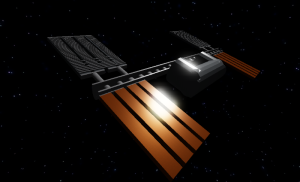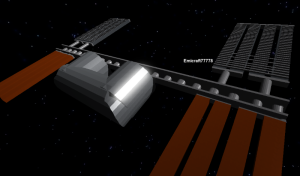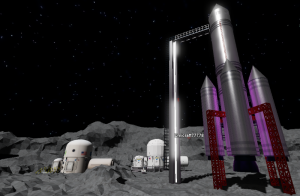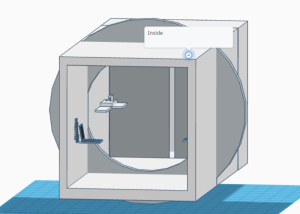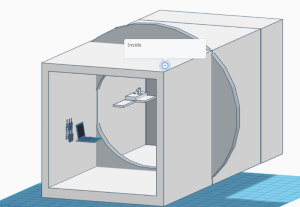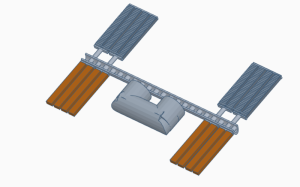Moon Life: Habitat de exploración Lunar by Moon Life by Emiliano
Lovci na ogenj El tejar-Veracruz Mehika 10 let 1 / Angleščina Luna
Zunanja povezava za oblikovanje Tinkercad 3D
Opis projekta
Lunar exploration presents a wide array of benefits for humanity, ranging from scientific breakthroughs to opportunities for human expansion into space. By studying the Moon, scientists can unravel the mysteries of solar system formation and the evolution of our own planet. Additionally, lunar research can provide crucial insights into the resources available on other celestial bodies, informing potential future endeavors beyond Earth.
Investigating food creation in space is essential for long-duration missions, such as establishing lunar settlements. Developing sustainable food production methods in space not only ensures the health and well-being of astronauts but also lays the groundwork for future extraterrestrial colonization efforts. Understanding how to cultivate crops in lunar conditions can lead to innovations in agriculture that benefit both space exploration and terrestrial farming practices.
Establishing lunar outposts for oxygen and food generation represents a significant step towards self-sufficiency in space. By utilizing resources available on the Moon, such as regolith and water ice, astronauts can produce vital supplies locally, reducing dependence on Earth for resupply missions. This not only lowers the cost of space exploration but also enhances mission sustainability by mitigating the logistical challenges associated with transporting resources from Earth.
Utilizing lunar regolith for habitat construction presents an innovative solution for creating safe and sustainable living spaces on the Moon. Regolith, the layer of loose, heterogeneous material covering solid rock on the lunar surface, can be transformed into building materials using various techniques, such as sintering or 3D printing. Constructing habitats from local materials reduces the need to transport bulky building materials from Earth, streamlining construction processes and minimizing costs.
Protecting against solar radiation is crucial for the safety and well-being of astronauts living and working on the Moon. Lunar habitats can be designed with shielding materials to minimize exposure to harmful radiation, ensuring the health of inhabitants. Additionally, leveraging natural features, such as underground lava tubes, provides additional protection against radiation exposure, offering safe havens for lunar settlers.
Furthermore, utilizing lunar resources for water production is essential for sustaining life on the Moon. Water is not only vital for human consumption but also serves as a critical resource for various industrial processes and fuel production. Extracting water from lunar ice deposits or regolith enables astronauts to replenish their water supply locally, reducing reliance on Earth for water resupply missions and enabling long-term human presence on the Moon.
In conclusion, lunar exploration, research into food creation, establishment of lunar outposts for resource generation, and utilization of lunar regolith for habitat construction offer numerous benefits for humanity. These endeavors not only advance scientific knowledge and technological capabilities but also pave the way for sustainable human presence beyond Earth, ultimately contributing to the long-term survival and prosperity of our species.
Povezava na projekt
https://emiliano-project-moon-camp.my.canva.site/www-emiliano-moon-camp
#3D oblikovanje #Znanstveni poskusi #Drugo
Drugi projekti
Winnetka - Združene države Amerike



